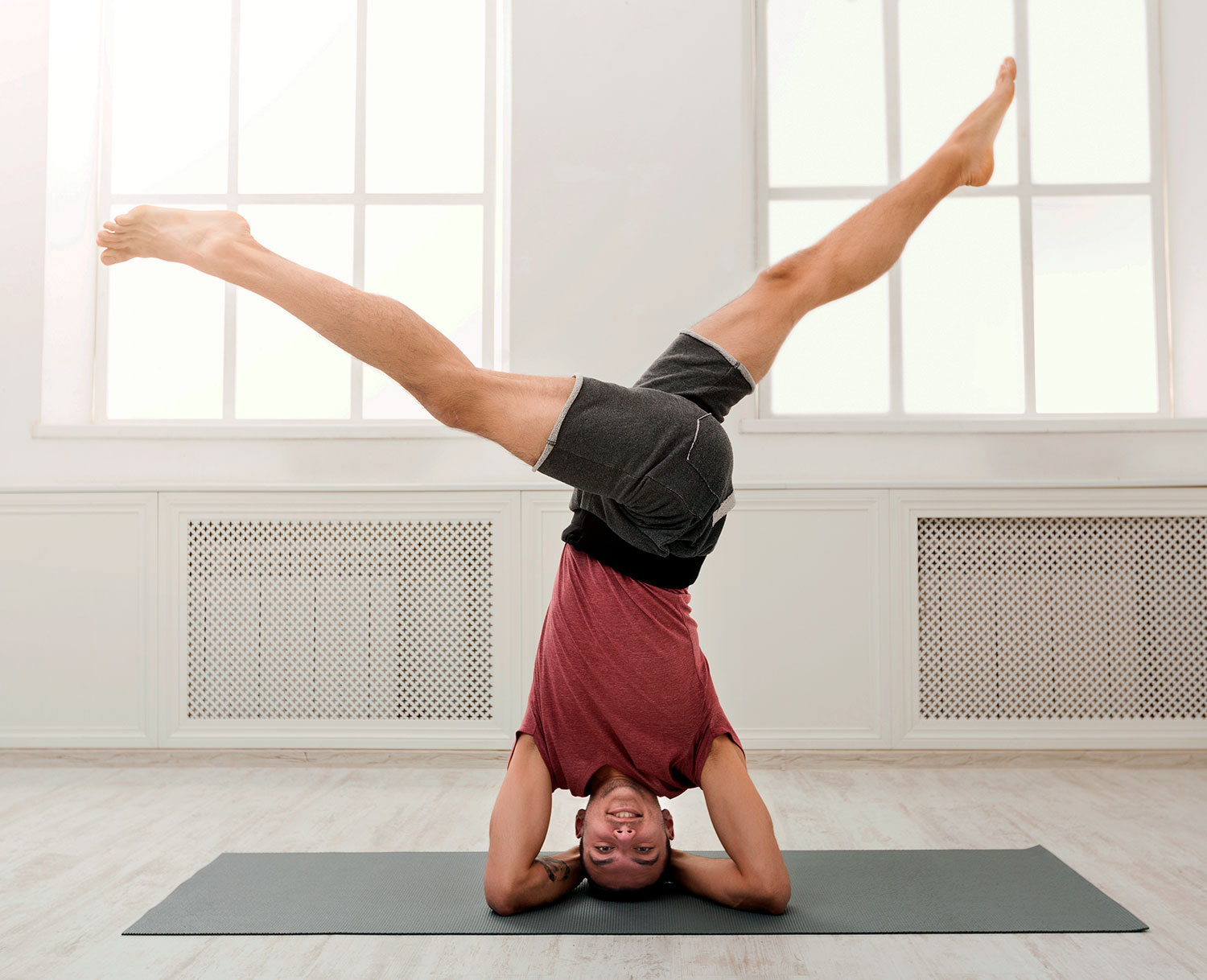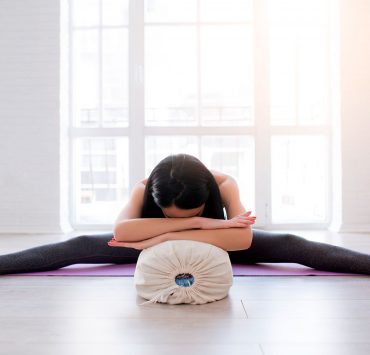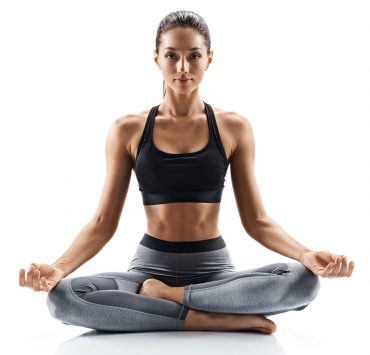
After spending nearly two decades as a relationship therapist, Patricia…
Contrary to some common assumptions, yoga benefits men just as much as women. A growing number of men have been regularly making their way to yoga classes to practice their downward dogs. Many are becoming hooked by the mental and physical health benefits that arise from stretching, strengthening, and breathing. Listed below are several excellent postures for men to incorporate into their daily routine.
Utkatasana — Chair Pose

We all know what happens when you skip leg day, so luckily Utkatasana is here to keep everything in balance. Despite the quivering in your legs, it’s not all about the lower body in this pose. Chair pose challenges the stabilizing muscles of the abdomen while the shoulders and chest experience a good stretch. Begin standing tall with big toes touching and about an inch between the heels. Take a deep breath in to raise the arms overhead with palms facing and shoulders dropping down. As you exhale, bend the knees and sink the hips back. Draw weight into the heels and activate the core as you bask in your innate strength. As the legs begin to shake, remain long through the spine and sink the tailbone down to release any tension in the lower back. Chair pose really starts when you’re ready to call it quits, so put your limits to the test and hang in there!
Adho Mukha Svanasana — Downward Facing Dog Pose

It’s no wonder that so many are fooled into thinking downward facing dog is easy based on its popularity and regular appearance in yoga classes, but this couldn’t be further from the truth. This pose stretches the whole back line of the body, making it a great warmup or a post-workout release. While providing a great stretch to various muscle groups, it also strengthens the arms, legs, and core. If you’re prone to getting hot-headed, this could be an excellent way to reduce stress while improving circulation and high blood pressure. Find your way to all fours with toes tucked under and hands slightly forward from the shoulders. Inhale to lift the knees off the floor and exhale to send the hips up and back. Let the head and neck relax as you roll the shoulders away from the ears. Keep a generous bend in the knees if you’re feeling extra tight, perhaps adding some movements to help loosen things up. As you soak up the benefits of this shape, continue to draw from your base towards the midline.
Virabhadrasana I — Warrior I

Virabhadrasana I doesn’t only evoke the warrior within, it also invites space into the hips and shoulders. This powerful stance strengthens thigh muscles, providing support along the sensitive knee joints and preventing future injury. Starting in a downward facing dog, inhale your right leg up and back and exhale while drawing knee to nose. Plant your right foot between your hands and turn the left foot flat at a 45-degree angle, lining the front heel to the back arch. Root down through the knife edge of your left foot as the thighs squeeze together and both arms inhale overhead. Bend the right leg at a 90-degree angle, stacking knee over ankle, while drawing the right hip back to keep the pelvis aligned. Stay tall through the spine and keep the gaze steadily focused ahead to maintain balance. If you’re still feeling wobbly in this posture, try widening your stance while continuing to pull the thighs together.
Tadasana — Mountain Pose

There’s much to be learned from the mountains, and Tadasana is the perfect example of how standing tall requires physical strength and precise alignment. Supporting the framework of the human body involves mindful activation of various muscle groups. Mountain pose is the foundation for all other standing asanas and effectively corrects posture. The energized nature of Tadasana strengthens the core and thigh muscles while returning flexibility to the plantar fascia. Stand tall with the big toes touching heels slightly apart. Feel the weight evenly distributed through all four corners of the feet as you pull the arches up. Follow this activation into the legs, drawing the kneecaps up by engaging the thighs. Trace your awareness down the body and notice how you can effectively release tension while maintaining proper alignment. Every inhale serves as a lengthening of the spine while every exhale allows the shoulder blades to surrender down the back.
Uttanasana — Standing Forward Fold Pose

Similar to gradually adding more weight on to your bench press, forward folds are excellent tools for witnessing change in the body. Your fingers may feel far away from your toes on the first attempt, but over time you’ll notice a significant shift in hamstring flexibility that allows for a deeper stretch. This spatial increase in the legs welcomes room for expansion in the lower back, reducing the occurrence of aches and pains. Begin in mountain pose with feet at hips-distance and hands on your hips. Hinge forward at the waist on an exhale keeping the spine straight. Bend the knees as needed while the upper body drapes down, and the arms hang loosely towards the floor. Another option is to grab opposite elbows and gently sway the upper body side to side. Allow gravity to take over as you loosen tension from the lower back up through the head and neck. Hold for around a minute before slowly rolling the spine upright.
Paripurna Navasana — Boat Pose

Sure, ‘dad bods’ are trendy right now, but no one ever said washboard abs are going out of style. Navasana is an excellent pose for enhancing posture while challenging the core stabilizing muscles. Find a comfortable seat with knees bent and feet planted. Bring both arms parallel to the mat with palms facing in. As you inhale, slowly shift back until you find a comfortable space behind the tailbone to balance. Let the feet begin to lift from the floor, keeping knees bent or straightening them for an extra challenge. Engage the core to maintain a straight spine and open chest. There’s plenty of ways to customize this shape, making it more difficult or more accessible as needed. Add some Russian twists or keep the feet grounded, either way, you’re working those abs!
Kapotasana — Pigeon Pose

No person, male or female, is immune to tightness in the hips. This tension creates physical and emotional disturbances in the body that are hard to ignore. Pigeon pose is one of the most notorious hip-opening postures with variations to meet all needs. Starting in a downward facing dog, bring your right knee behind your right wrist and extend the left leg straight back from the hip point. Bring your right shin as close to parallel with the front of the mat as possible without causing significant discomfort. Find a modification that works best for you, taking a bolster or block under the right hip, or finding a seated or reclined variation of the posture. Hold for at least one minute on each side, continuing to breathe through the sensations as they come.
Supta Padangusthasana — Reclined Hand To Big Toe Pose

This pose may feel difficult at first, but over time it allows for a steady release in the thighs, hamstrings, hips, calves, and lower back. Releasing blocked energy in these areas stimulates the prostate gland and improves digestion. In a reclined shape, we emphasize our ability to focus on the breath and how it relates to the release of tension. Lie on your back and extend your left leg straight up with the foot flexed. Root the right leg down from hip to heel as you bend the left knee in towards your chest. Loop a strap around the sole of your left foot and extend the leg towards the ceiling. Keep your shoulders on the mat and continue to breathe space into the body.
Malasana — Squat Pose

It may be hard to believe that many cultures assume a squatting position for casual conversations and regular bathroom visits. Most Westerners have lost the ability to comfortably hold a proper squat, resulting in constant tension through the legs and hips. This posture is effective in reducing constipation, relieving tightness in the hip flexors, and bringing flexibility to the legs. From a standing position, bring the feet to shoulder-distance with the toes slightly dialed out. Bend the knees to lower the sit bones down evenly towards the mat without touching. If the heels don’t comfortably meet the mat, try rolling a towel up and using it to support them. Find length in the spine and bring the hands to heart center to encourage a lift in the sternum. Use the elbows to draw the knees back and invite more space to the hip flexors. As awkward as it may feel at first, continue to practice this pose, and soon you’ll be hanging out having tea in your low squat.
Setu Bandha Sarvangasana — Bridge Pose

It’s common for men to experience tightness across the chest, resulting in compromised breathing and increased difficulty with physical activities. Luckily, bridge pose addresses tension in the torso and creates more space in the chest for easier breathing. This release also helps with fatigue, headaches, insomnia, and anxiety. Begin lying on your back with knees bent, arms by your sides, and feet planted at hips-distance. Bring the heels close enough that you can touch them with your fingertips. On an inhale root down through the feet and palms to lift the hips towards the ceiling. Avoid letting the knees splay out as you breathe in this shape for about 30 seconds. Over time, bridge pose will feel more natural, and the newfound space in the chest will leave you feeling ready to run a marathon.
What's Your Reaction?
After spending nearly two decades as a relationship therapist, Patricia journeyed down the path of writing as a vehicle for sharing her wisdom. Her work reflects a sincere interest in readers’ wellbeing and is abundant with helpful advice and fascinating insight.














